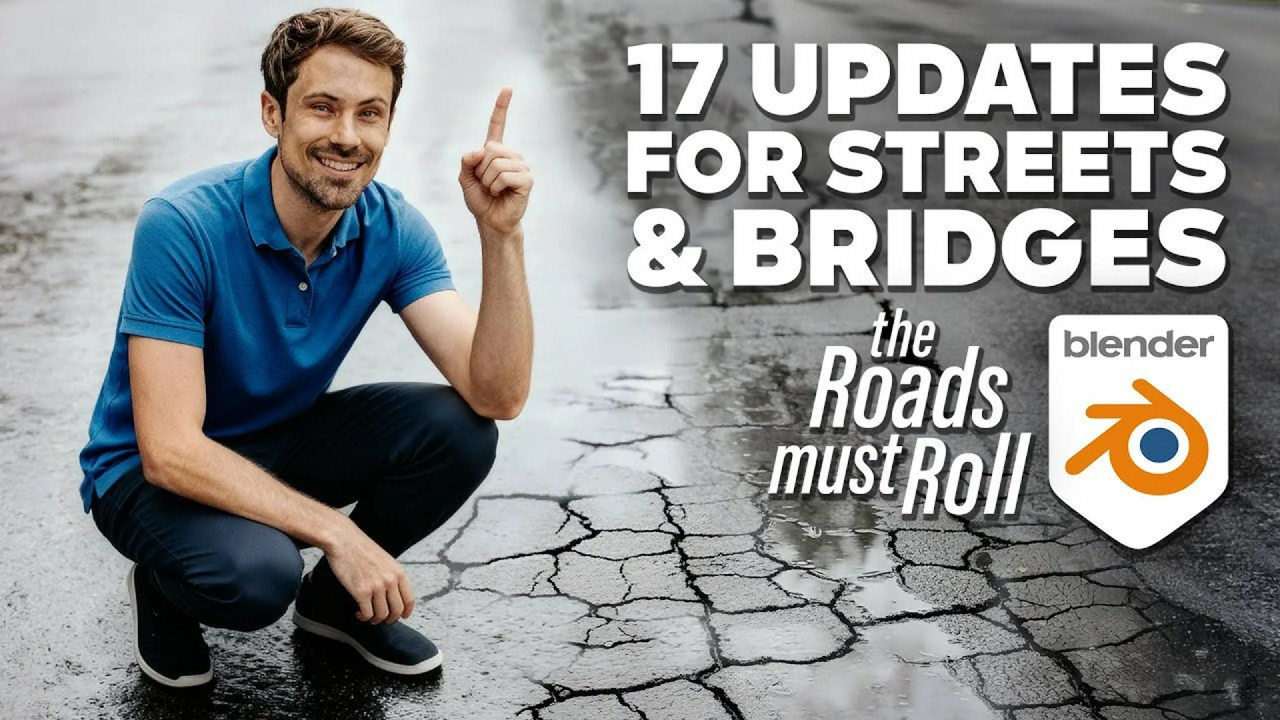Discover how to rapidly create stunningly realistic procedural rocks in Blender using Geometry Nodes and advanced material techniques. This guide, inspired by Cinematic Cookie, simplifies complex workflows for dynamic 3D asset generation.
In the ever-evolving world of 3D art, efficiency and realism are paramount. Today, we’re diving into a fascinating tutorial by the talented creator, Cinematic Cookie, who unveils his method for generating highly realistic procedural nature assets, specifically rocks, using Blender’s powerful Geometry Nodes. This approach allows artists to create complex, unique models with incredible speed and flexibility, making it an invaluable skill for game development, architectural visualization, and more. For those keen to follow his work, be sure to check out his Instagram page.
Create Realistic Procedural Nature Assets in Blender Fast | Geometry Nodes Tutorial by Cinematic Cookie
At its core, Blender’s Geometry Nodes system offers a non-destructive way to manipulate geometry using a node-based interface. This means you can easily adjust parameters and iterate on your designs without permanently altering the base mesh. It’s a game-changer for procedural modeling, enabling the creation of intricate details that would be tedious to sculpt manually.
The Geometry Nodes Workflow: Building Your Rock
Cinematic Cookie’s tutorial meticulously outlines the steps to build a procedural rock from a simple curve. Here’s a breakdown of the key stages:
- Initial Curve Setup: Start with a curve, resample it by length, and convert it to a mesh. The creator then adds a
Split Edgesnode followed by aScale Elementsnode (set to edges) to introduce overlaps. - Shape Foundation: This modified mesh is converted back into a curve. A
Set Positionnode zeroes out the X and Y positions, effectively flattening it. ACurve to Meshnode, using aCurve Circleas a profile, then forms the basic volumetric shape. To control the profile’s size dynamically, the X-position of the splines is captured and used to drive theCurve to Meshprofile size. - Adding Organic Detail: The mesh is then triangulated and a
Dual Meshnode is applied, with an optionalRandom Valuenode for triangulation variations. ASubdivisionnode is introduced, followed by anotherSet Positionnode that uses aNoise Textureas an offset, subtly distorting the shape for a more natural look. - Volume Remeshing: To further refine the form and add organic erosion, the mesh is converted to a volume (using
Mesh to Volume) and then back to a mesh (usingVolume to Mesh). This process effectively remeshes and smooths the geometry. - Stratification Lines: For distinct geological layers, a duplicate of the noise displacement is used with a
Set Positionnode. The position vector is multiplied by zero on its set value, squashing the noise into horizontal lines. - Final Touches: A
Set Shade Smoothnode ensures smooth rendering, and the original curve is rejoined for viewport visibility. Finally, a new material is assigned using aSet Materialnode.
Crafting Realistic Materials: Texture & Detail
Beyond the geometry, the material setup is crucial for realism. The video demonstrates a sophisticated PBR (Physically Based Rendering) material workflow:
- Base Textures: The material uses PBR rock textures with object coordinates and box projection for seamless wrapping.
- Fake Detail & Cracks: Fake micro-detail is achieved by squashing a
Noise Texturewith aMappingnode and feeding it into aBumpnode’s height. For intricate crack patterns, aVoronoi Textureset to “distance to edge” is used, its contrast enhanced with aColor Ramp, and then distorted with aNoise Texturevia aMix RGBnode set to “linear light.” - Crevice Enhancement: Ambient occlusion is cleverly employed to select crevices by inverting its contrast. This inverted output then drives the factor of a
Hue Saturation Valuenode, darkening these recessed areas. For even more detail, the bump map can be connected to the normal input of the ambient occlusion node. - Custom Coloration: To allow for easy color customization, a
Map Rangenode converts the texture to grayscale, which is then blended with a chosen color using aMix RGBnode set to “overlay.”
Beyond the Nodes: Efficiency and Creativity
While this node-based approach offers unparalleled control, the tutorial also highlights an alternative for those seeking even greater efficiency: Cinematic Cookie’s “Nature Generator” add-on. This powerful tool provides a library of procedural assets, including the rock showcased, with simplified UI settings, allowing artists to generate complex environments without delving deep into node networks.
Blender’s Geometry Nodes represent a significant leap forward in procedural content creation. The flexibility they offer, combined with a robust material pipeline, empowers artists to generate highly detailed and unique assets like these realistic rocks with astonishing speed. This kind of procedural workflow is not only efficient but also highly creative, enabling endless variations from a single setup. For further exploration into Geometry Nodes, Blender’s official documentation is an excellent resource.



